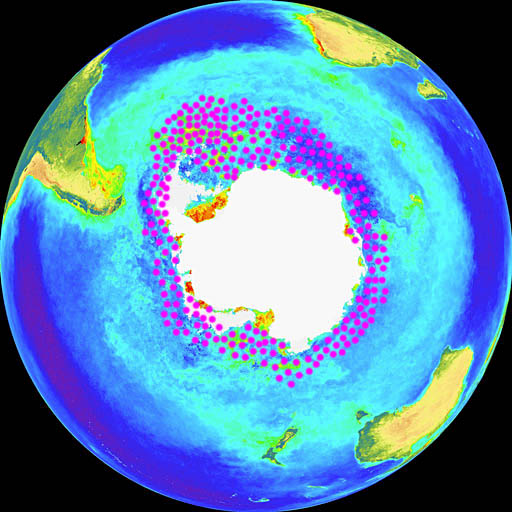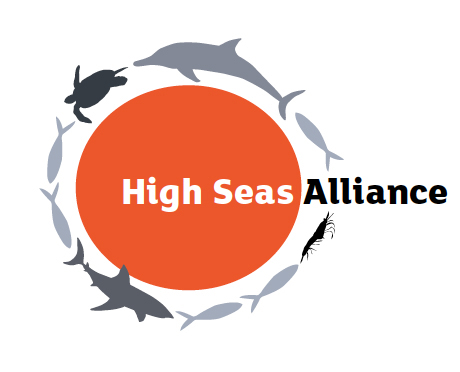Background
 Patagonian toothfish/ Source: U.S. FDA.The Southern Ocean is rich in marine life, including fish species of interest to industry such as krill and toothfish. There are other species that have been or continue to be commercially fished in the waters around Antarctica, such as mackerel icefish and Antarctic rock cod, yet many people are unaware that there are active fisheries in the region. It is true that Southern Ocean experiences less fishing activity than many other parts of the world. Due to the dangerous conditions, fishing in Antarctica is difficult and expensive. But as with fisheries everywhere, Antarctic fisheries have still experience overfishing, data uncertainties, and illegal, unreported, and unregulated (IU) fishing. The Commission on the Conservation of Antarctic Marine Living Resources (CCAMLR), which began after the signing of the Convention on the Conservation of Antarctic Marine Living Resources in 1980, is charged with determining the rules for fishing (for non-mammal species) in the Southern Ocean. The countries that signed the Convention, known as Members, meet yearly to discuss the status of Antarctic marine species and discuss how best to conserve these populations. Although of course the Convention does not prohibit fishing, its primary mission is conservation, unlike the groups known as Regional Fishery Management Organizations (RFMOs) whose focus is managing fisheries. The Convention is based on protection of ecosystems and the precautionary approach, which means that fishing should only be undertaken if it is reasonably certain that the harvest is sustainable and that the ecosystem will not be harmed.
Patagonian toothfish/ Source: U.S. FDA.The Southern Ocean is rich in marine life, including fish species of interest to industry such as krill and toothfish. There are other species that have been or continue to be commercially fished in the waters around Antarctica, such as mackerel icefish and Antarctic rock cod, yet many people are unaware that there are active fisheries in the region. It is true that Southern Ocean experiences less fishing activity than many other parts of the world. Due to the dangerous conditions, fishing in Antarctica is difficult and expensive. But as with fisheries everywhere, Antarctic fisheries have still experience overfishing, data uncertainties, and illegal, unreported, and unregulated (IU) fishing. The Commission on the Conservation of Antarctic Marine Living Resources (CCAMLR), which began after the signing of the Convention on the Conservation of Antarctic Marine Living Resources in 1980, is charged with determining the rules for fishing (for non-mammal species) in the Southern Ocean. The countries that signed the Convention, known as Members, meet yearly to discuss the status of Antarctic marine species and discuss how best to conserve these populations. Although of course the Convention does not prohibit fishing, its primary mission is conservation, unlike the groups known as Regional Fishery Management Organizations (RFMOs) whose focus is managing fisheries. The Convention is based on protection of ecosystems and the precautionary approach, which means that fishing should only be undertaken if it is reasonably certain that the harvest is sustainable and that the ecosystem will not be harmed.
 Map of Southern Ocean and Antarctica
Map of Southern Ocean and Antarctica
 Deep frozen plates of Antarctic krill for use as animal feed and raw material for cooking. Photograph by Uwe Kils.The Convention was signed amid concerns that the harvesting of Antarctic krill would upset the food chain in the Southern Ocean and harm the many species that eat krill, including penguins, whales, and seals. Shortly after the Commission began to meet, the marbled rock cod fishery was closed due to overfishing and stock depletion. Since then, information on Antarctic fisheries has improved considerably, although there is still room for improvement. In the 1990s, the Commission had to confront a crisis of illegal fishing for the newly popular Patagonian toothfish, sold as Chilean seabass. CCAMLR continues to make progress in effective management of Southern Ocean fisheries, but many challenges lie ahead.
Deep frozen plates of Antarctic krill for use as animal feed and raw material for cooking. Photograph by Uwe Kils.The Convention was signed amid concerns that the harvesting of Antarctic krill would upset the food chain in the Southern Ocean and harm the many species that eat krill, including penguins, whales, and seals. Shortly after the Commission began to meet, the marbled rock cod fishery was closed due to overfishing and stock depletion. Since then, information on Antarctic fisheries has improved considerably, although there is still room for improvement. In the 1990s, the Commission had to confront a crisis of illegal fishing for the newly popular Patagonian toothfish, sold as Chilean seabass. CCAMLR continues to make progress in effective management of Southern Ocean fisheries, but many challenges lie ahead.
Current Issues
 Krill distribution by NASA/SeaWIFS. The main concentrations are in the Scotia Sea at the Antarctic Peninsula. Author: Uwe Kils. Today, the primary species targeted by commercial fishing operations are Antarctic krill and toothfish, both the Patagonian and Antarctic species. Antarctic krill is mostly processed into feed for farmed fish or omega-3 nutritional supplements for humans, although some human food products are made from krill. Krill has always been a species of interest to fishing operators because of its high biomass, but a combination of improved fishing and processing technology and new uses for krill have renewed commercial interest in the fishery. Unfortunately, this increased interest comes at a time when the krill population appears to be in long-term decline. Furthermore, the fishery is often concentrated in the same areas where there are many krill predators. Despite years of research, there are still considerable scientific uncertainties about ecosystem impacts and the status of the krill population. Thus, CCAMLR faces a challenge in ensuring that the fishery is managed sustainably.
Krill distribution by NASA/SeaWIFS. The main concentrations are in the Scotia Sea at the Antarctic Peninsula. Author: Uwe Kils. Today, the primary species targeted by commercial fishing operations are Antarctic krill and toothfish, both the Patagonian and Antarctic species. Antarctic krill is mostly processed into feed for farmed fish or omega-3 nutritional supplements for humans, although some human food products are made from krill. Krill has always been a species of interest to fishing operators because of its high biomass, but a combination of improved fishing and processing technology and new uses for krill have renewed commercial interest in the fishery. Unfortunately, this increased interest comes at a time when the krill population appears to be in long-term decline. Furthermore, the fishery is often concentrated in the same areas where there are many krill predators. Despite years of research, there are still considerable scientific uncertainties about ecosystem impacts and the status of the krill population. Thus, CCAMLR faces a challenge in ensuring that the fishery is managed sustainably.
The management of toothfish also takes place under some uncertainty. Catches have declined from the initial boom in the 1990s, and IUU fishing has declined but has not been eliminated entrirely. Some stocks in the Southern Ocean and elsewhere have still not recovered from prior overfishing. However, for many toothfish populations in the Antarctic it is remains to be seen if the long-term impact of previously high catches, in addition to the current catches, will result in long-term declines in the population. Toothfish are long-lived, slow-growing predators - fish with these characteristics are highly vulnerable to overfishing. For example, it was recently determined that the age of maturity for Antarctic toothfish is double the previous estimate. Fishing should only proceed in the presence of solid scientific advice if the fisheries are to be sustainable long-term. Toothfish occupy a critical top predator role in Antarctic ecosystems. Evidence from other fisheries demonstrates that removing top predators can have unexpected consequences for other organisms.
Even though management rules have become much more strict, IUU fishing continues to threaten the sustainability of toothfish fishing. IUU fishing is a global problem that has proven difficult to eliminate - vessels fly flags of convenience, which is when a ship is registered in a country that is not the same as the one its owners are from, to avoid following strict regulations; transfer illegal catches between vessels at sea to hide their origin; and visit areas like the Southern Ocean that are difficult to supervise. IUU vessels in the Southern Ocean also use destructive fishing methods that legal vessels do not, such as gillnets, and do not follow conservation measures designed to prevent seabird bycatch and other environmental impacts. However, there have been positive international developments in the fight against this pernicious problem, most notably in the form of the U.N.'s Food and Agriculture Organization's (FAO) Agreement on Port State Measures to Prevent, Deter and Eliminate Illegal, Unreported and Unregulated Fishing. The Agreement, which is in the process of being ratified, establishes a series of rules for fishing vessels that will make it much more difficult for illegal vessels to operate. These measures include increased inspections of vessels requesting port entry, and denial of entry to vessels unable to demonstrate that their catches are legal. ASOC has urged CCAMLR Members to implement these vital measures immediately, since the Agreement has not yet entered into force. The global fishing industry has operated without sufficient regulation for far too long, and CCAMLR should continue its tradition of leadership in fisheries management by taking bold steps.
Our Work
ASOC works to protect Southern Ocean fisheries by:
- Attending CCAMLR meetings as an NGO observer and presenting the views of the conservation community to CCAMLR Members;
- Encouraging CCAMLR to implement strict port state measures to deter and prevent IUU fishing;
- Working through the Antarctic Krill Conservation Project to ensure that the krill fishery is managed effectively;
- Participating as a stakeholder in assessments to determine whether Southern Ocean fisheries can be certified as environmentally sustainable under the Marine Stewardship Council blue label.



